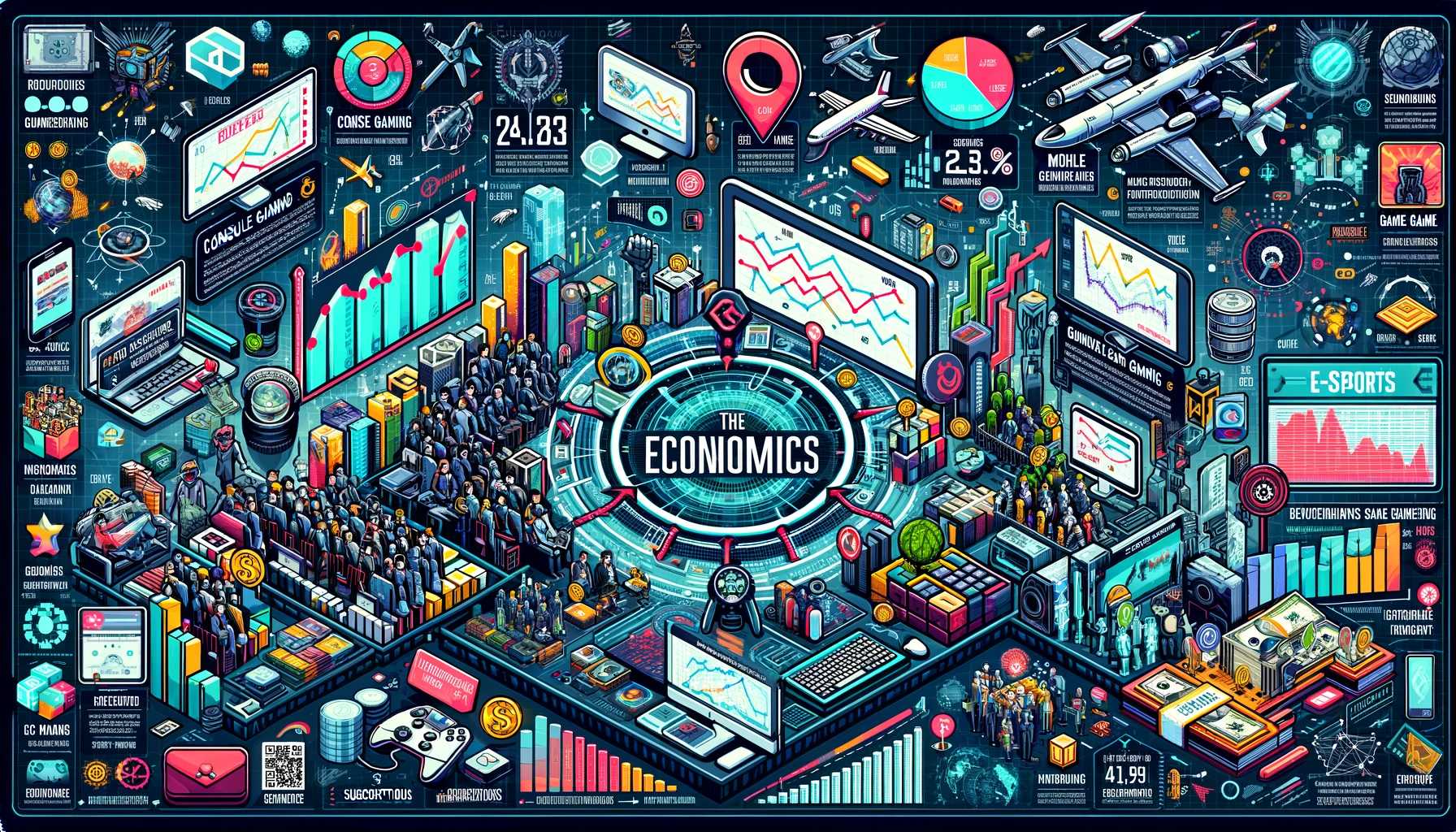Welcome to the fascinating world of the gaming industry, where creativity meets commerce, and digital entertainment has become a global powerhouse. In this blog post, we'll delve into the economics behind one of the most dynamic and rapidly growing sectors of the entertainment industry – gaming. From market trends to revenue models, let's explore the driving forces shaping the economics of gaming in 2024.
Market Trends:
The gaming industry has experienced explosive growth in recent years, propelled by technological advancements, shifting consumer preferences, and the increasing ubiquity of digital devices. Today, gaming is no longer confined to dedicated gaming consoles or PCs – it's accessible on smartphones, tablets, and even smart TVs, making it more accessible and inclusive than ever before.
One of the most significant market trends in the gaming industry is the rise of mobile gaming. With the widespread adoption of smartphones and tablets, mobile gaming has emerged as the dominant segment of the gaming market, accounting for a significant portion of overall revenue. From casual puzzle games to immersive multiplayer experiences, mobile gaming offers something for everyone, attracting a diverse audience of players across age groups and demographics.
Moreover, the advent of cloud gaming services and streaming platforms has further expanded the reach of gaming, allowing players to access high-quality games without the need for expensive hardware or downloads. Cloud gaming services offer the promise of instant access to a vast library of games, seamless cross-platform gameplay, and real-time streaming of gameplay footage – revolutionizing the way games are distributed, consumed, and monetized.
Another key trend shaping the gaming industry is the growing convergence of gaming and esports. Esports – competitive video gaming events and tournaments – have surged in popularity in recent years, attracting millions of viewers and generating substantial revenue through sponsorships, advertising, and media rights. The rise of esports has transformed gaming into a spectator sport, with professional players competing for fame, glory, and lucrative prize pools in games like League of Legends, Dota 2, and Fortnite.
Revenue Models:
In addition to its growing influence and reach, the gaming industry is also characterized by a diverse array of revenue models and monetization strategies. From traditional retail sales to free-to-play microtransactions, let's explore some of the most common revenue models in the gaming industry:
Retail Sales: Historically, retail sales of physical copies of games have been a primary revenue source for game developers and publishers. Players purchase games either in-store or online, typically paying a one-time fee to access the full game content. While retail sales continue to be an important revenue stream for the industry, digital distribution platforms like Steam, PlayStation Store, and Xbox Live have increasingly become the preferred method of purchasing games, driving growth in digital sales.
Free-to-Play (F2P): The rise of free-to-play games has transformed the gaming landscape, allowing players to download and play games for free while offering optional in-game purchases or microtransactions to monetize the experience. Free-to-play games often generate revenue through the sale of virtual goods, in-game currency, or premium content, enabling developers to monetize a large player base and generate ongoing revenue through engagement and retention.
Subscription Services: Subscription-based gaming services have gained traction in recent years, offering players access to a curated selection of games for a monthly or annual fee. Services like Xbox Game Pass, PlayStation Now, and Apple Arcade provide subscribers with unlimited access to a library of games, including both new releases and classic titles, for a fixed subscription fee. Subscription services offer a compelling value proposition for players, providing access to a diverse range of games without the need for individual purchases.
In-Game Advertising: In-game advertising has emerged as a lucrative revenue stream for game developers and publishers, allowing brands to reach a captive audience of players through targeted ads and sponsored content. In-game ads can take various forms, including banner ads, product placements, sponsored events, and branded content, providing developers with an additional revenue stream while offering players access to free or subsidized games.
Downloadable Content (DLC) and Expansions: Downloadable content (DLC) and expansions are additional game content or features that players can purchase to extend the lifespan of their gaming experience. DLC may include new levels, characters, storylines, or cosmetic items, offering players additional value and enhancing replayability. Expansions are larger-scale additions to a game, often introducing new gameplay mechanics, environments, or narrative arcs, and are typically sold as standalone content or bundled with the base game.
In conclusion, the gaming industry is a dynamic and multifaceted ecosystem driven by innovation, creativity, and technological advancement. From mobile gaming and cloud gaming to esports and in-game advertising, the economics of gaming are shaped by a diverse array of market trends and revenue models. As we continue to witness the evolution of gaming in 2024 and beyond, one thing is clear – the gaming industry is not only a cultural phenomenon but also a thriving economic engine driving growth, innovation, and opportunity on a global scale.
